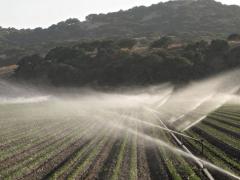Global implementation of two shared socioeconomic pathways for future sanitation and wastewater flows
Households are an important source of nutrient loading to surface water. Sewage systems without or
with only primary wastewater treatment are major polluters of surface water. Future emission levels
will depend on population growth, urbanisation, increases in income and investments in sanitation,
sewage systems and wastewater treatment plants.
This study presents the results for two possible shared socioeconomic pathways (SSPs). SSP1 is a scenario that includes improvement of wastewater treatment and SSP3 does not include such improvement, with fewer investments and a higher
population growth. The main drivers for the nutrient emission model are population growth, income growth and urbanisation. Under the SSP1 scenario, 5.7 billion people will be connected to a sewage system and for SSP3 this is 5 billion. Nitrogen and phosphorus emissions increase by about 70% under both SSP scenarios, with the largest increase in SSP1. South Asia and Africa have the largest emission increases, in the developed countries decrease the nutrient emissions. The higher emission level poses a risk to ecosystem services.
For more information you can contact: Peter van Puijenbroek
Authors
Specifications
- Publication title
- Global implementation of two shared socioeconomic pathways for future sanitation and wastewater flows
- Publication date
- 9 December 2014
- Publication type
- Publication
- Magazine
- Water Science and Technology, Vol 71 No 2 pp 227–233
- Product number
- 1654




